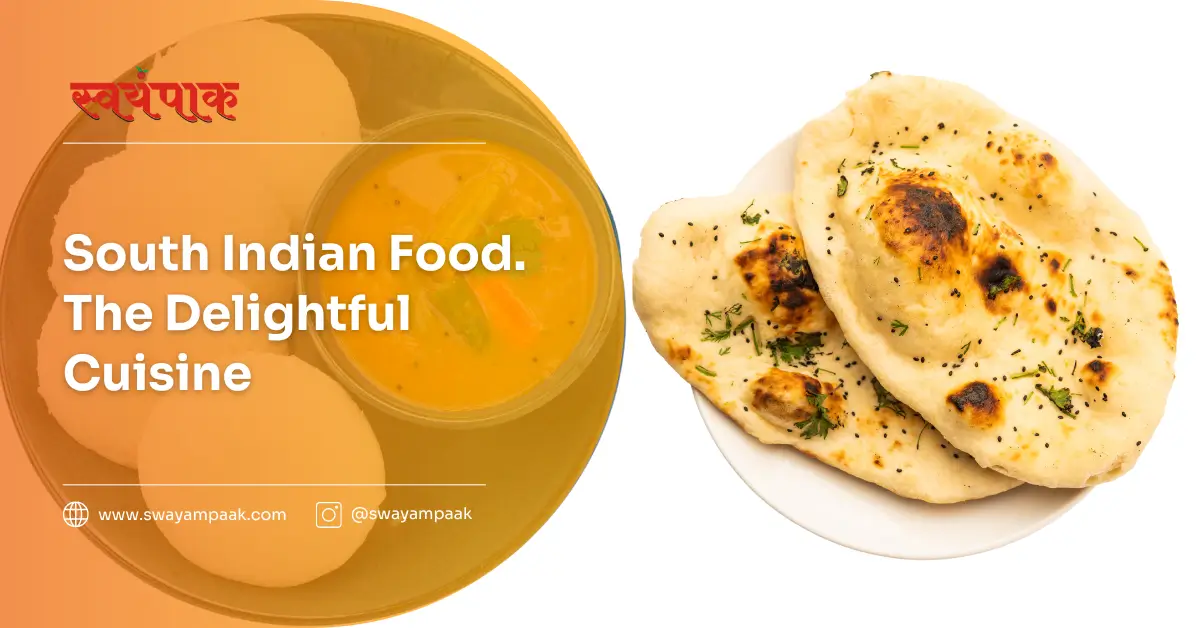The aroma of sizzling spices fills the air, a symphony of warmth and complexity. Creamy butter chicken bubbles in a copper pot, its vibrant orange hue promising a flavour explosion. Across the table, a paper-thin dosa sits regally, its crisp surface holding a treasure trove of spiced potato filling.
This isn’t just a meal; it’s a tale of two tables, a delicious journey through the contrasting landscapes of North and South Indian cuisine. From the fiery curries of the north to the fragrant rice dishes of the south, India offers a culinary adventure unlike any other.
In this article North Indian food vs South Indian food, we’re about to embark on a taste bud tantalizing exploration of these two distinct, yet equally delightful, regional cuisines.
Imagine a map bursting with flavour. That’s India’s culinary landscape! Spanning diverse regions, climates, and cultures, Indian food is a vibrant tapestry woven with regional specialities. The mighty Himalayas cradle the rich curries of Kashmir, while the coastal plains of Kerala boast fresh seafood delicacies.
In the bustling north, fragrant kebabs sizzle on tandoors, while the south simmers with aromatic lentil stews and fluffy rice preparations.
Each region boasts its own unique spice blends, cooking techniques, and signature dishes, offering a kaleidoscope of culinary experiences. From the creamy makhani gravies of Punjab to the tangy coconut curries of Tamil Nadu, India’s food scene is a celebration of regional diversity, waiting to be explored.
North Indian Food vs South Indian Food
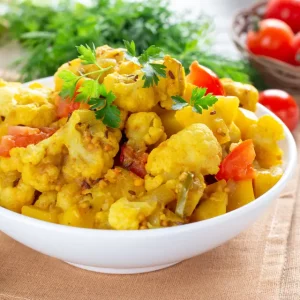

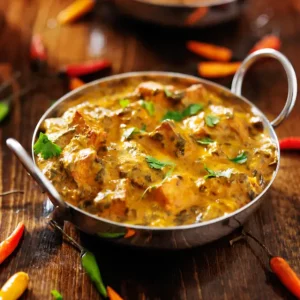
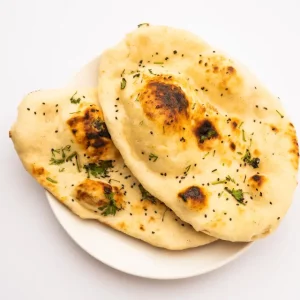


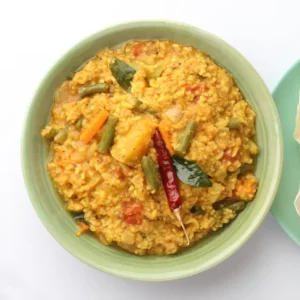
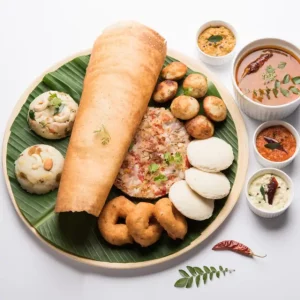
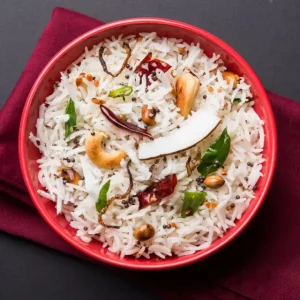
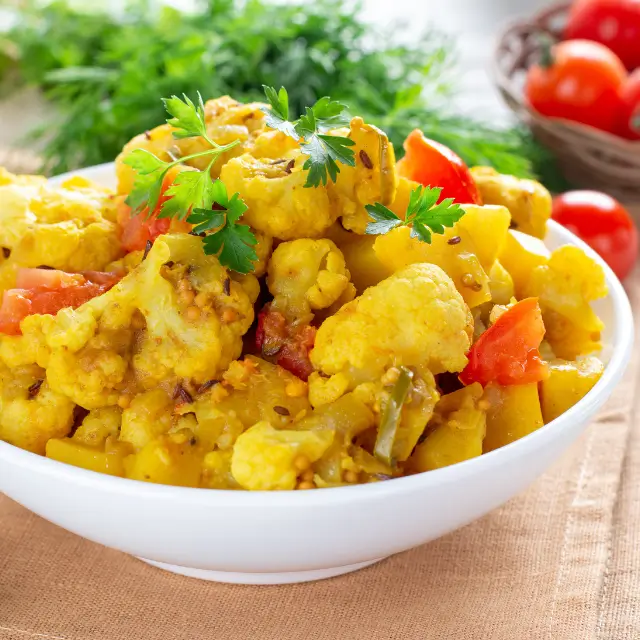
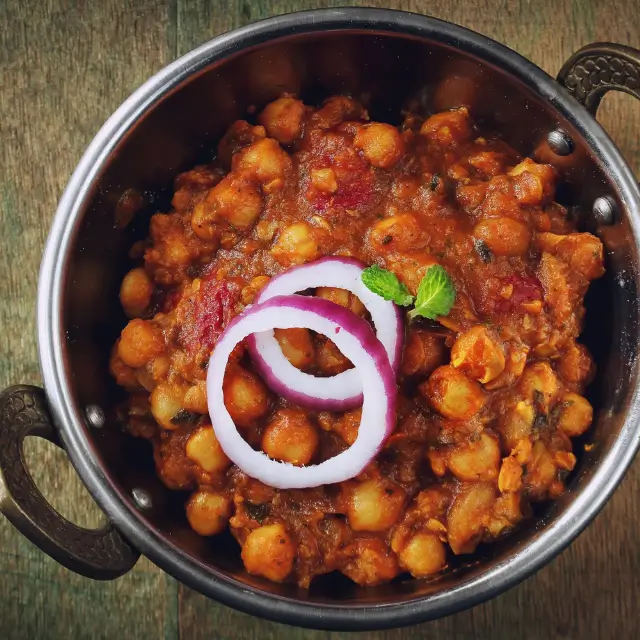
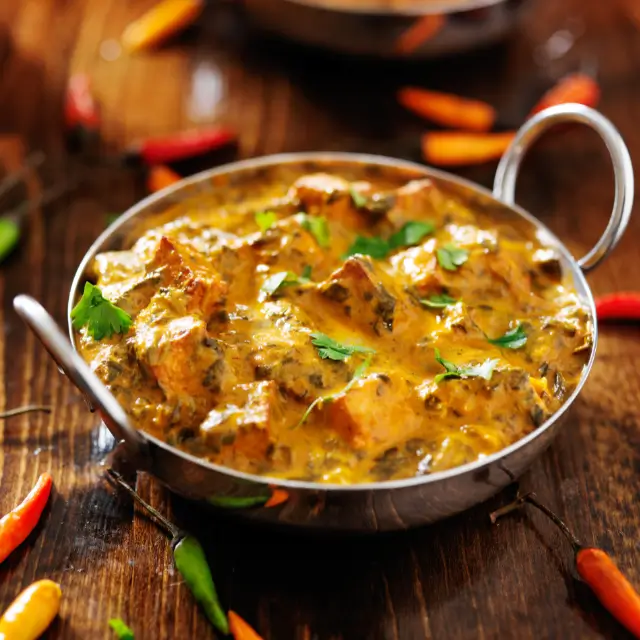
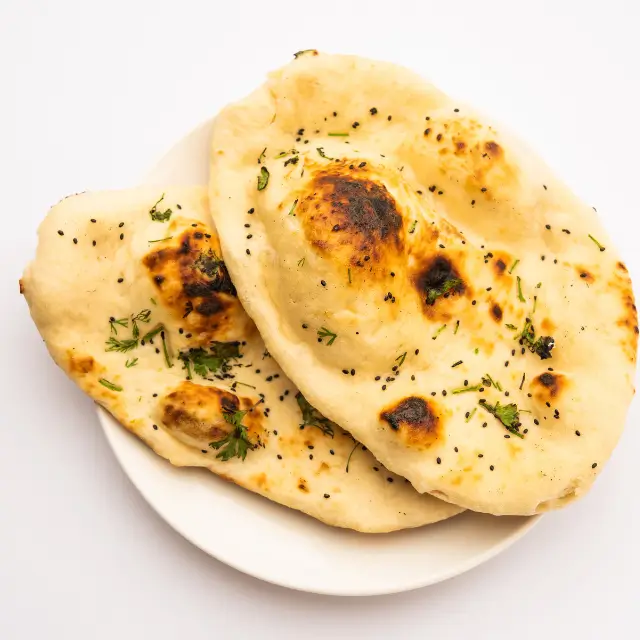
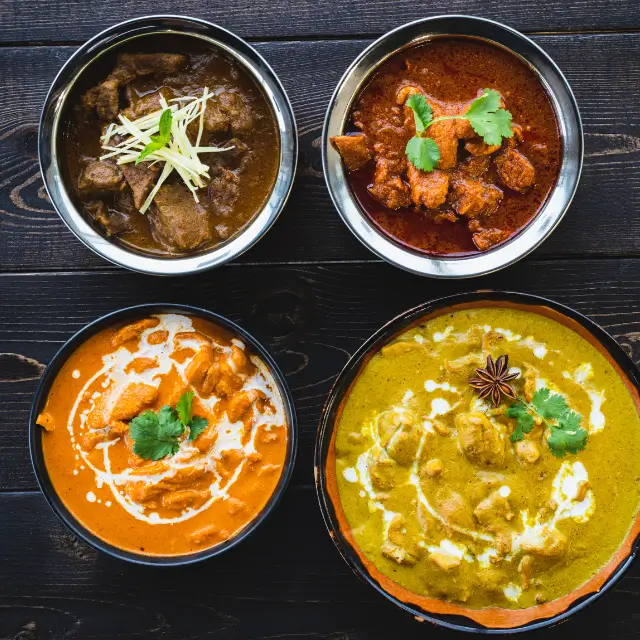
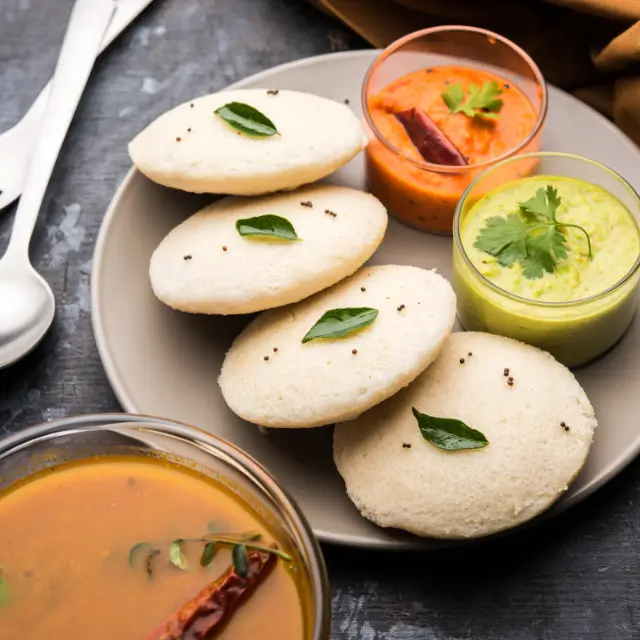
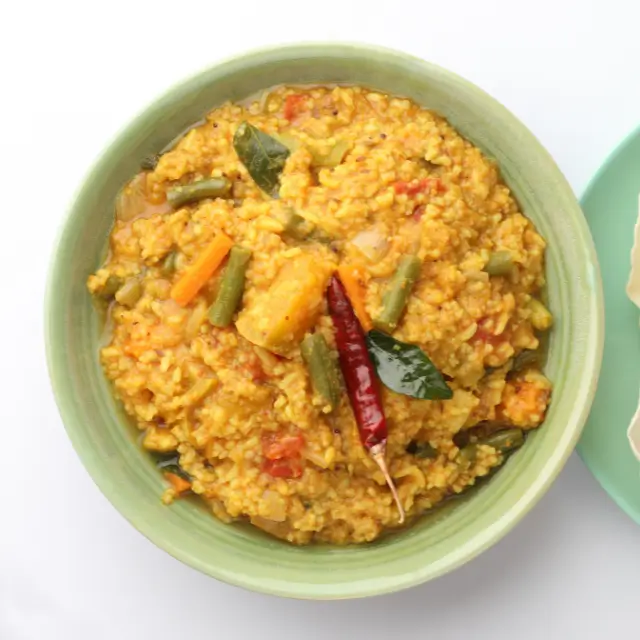
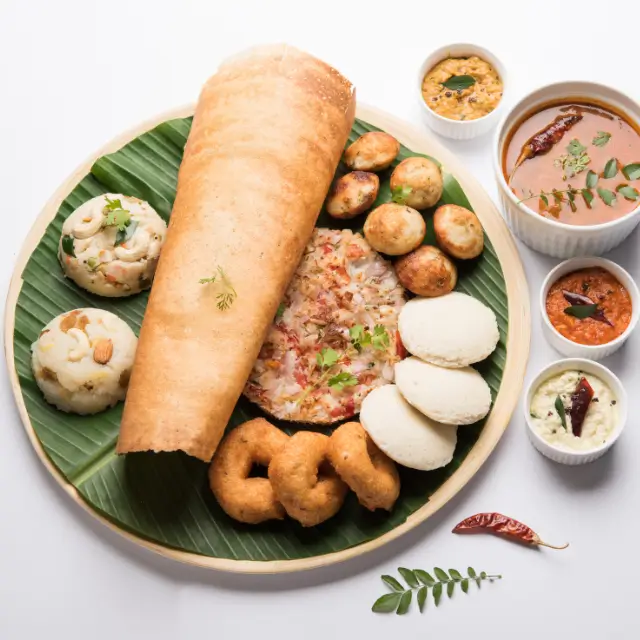
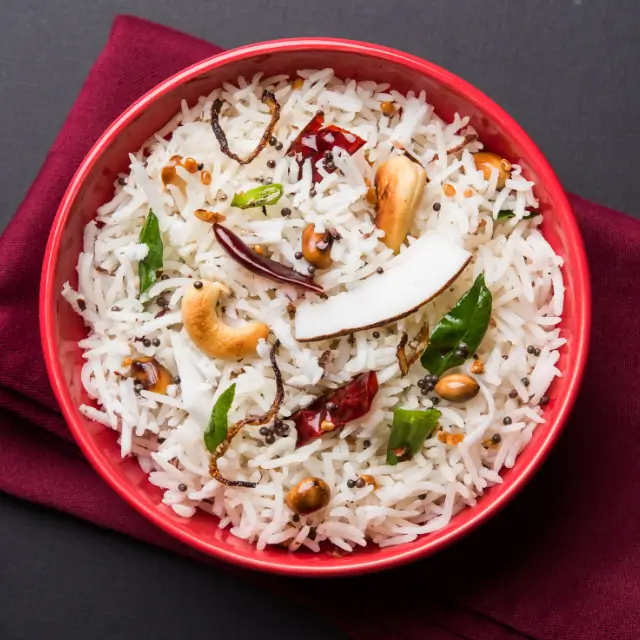
North India’s a celebration of richness and warmth. Think fluffy rotis, buttery naans, and decadent curries like butter chicken, simmered in creamy gravies and aromatic spices like garam masala. Here, wheat reigns supreme, and dairy products like yoghurt and paneer add a touch of tang and creaminess.
South Indian food, on the other hand, is a symphony of fresh flavours and textures. Rice takes centre stage, with fluffy dosas, savoury idlis, and comforting appams forming the base for an array of dishes. Coconut milk lends a touch of sweetness, while mustard seeds and curry leaves pop with a distinct fragrance.
Here, the spice profile leans towards fresh chillies and turmeric, creating dishes like fiery sambar stews and vibrant rasam soups. It’s a clear contrast: North India’s richness versus South India’s vibrant freshness.
Spice & Staples: The Building Blocks
North India: A Land of Rich Spices and Wheat Staples
North Indian cuisine is a symphony of warmth and richness, built on a foundation of aromatic spices and fluffy wheat bread. The air itself crackles with the enticing fragrance of garam masala, a complex blend that typically includes warming spices like cloves, cardamom, cinnamon, and cumin. This versatile blend forms the backbone of many North Indian curries, infusing them with depth and a touch of sweetness.
Wheat takes centre stage as the dominant grain in North India. Fluffy rotis, unleavened flatbreads cooked on a tawa (griddle), are a staple accompaniment to curries. For a touch of indulgence, naan, leavened flatbreads often cooked in a tandoor oven, offer a slightly chewy texture and a hint of char. Parathas, flatbreads stuffed with spiced fillings like potatoes or vegetables, provide a complete meal in themselves.
North Indian cuisine also embraces the richness of dairy products. yoghurt, used in marinades, raitas (cooling accompaniments), and creamy curries, adds a touch of tanginess. Ghee, clarified butter, lends a nutty flavour and a luxurious texture to dishes.
Paneer, Indian cottage cheese, plays a starring role in vegetarian dishes like Saag Paneer (spinach and cheese curry) and Palak Paneer (curry with spinach). The interplay of these spices, wheat bread, and dairy products creates a unique and flavourful culinary landscape that is distinctly North Indian.
South India
South Indian cuisine takes a contrasting approach, bursting with fresh, vibrant flavours and an emphasis on rice. The aroma of curry leaves, a staple herb used for tempering, fills the air with a unique fragrance.
Mustard seeds add a delightful pop when spluttered in hot oil, while chillies bring a welcome touch of heat. Turmeric, the golden wonder, not only lends its vibrant colour but also boasts anti-inflammatory properties. These spices, used individually and in combination, create a distinct flavour profile that is both complex and refreshing.
Rice reigns supreme in South India, forming the base for a multitude of dishes. Dosa, a thin, crispy crepe made from fermented rice and lentil batter, is a popular breakfast and snack option. Idli, fluffy steamed rice cakes, offer a healthy and light alternative.
Appam, lacy fermented rice pancakes with a soft, pillowy texture, are another South Indian staple. These rice dishes provide a neutral canvas for an array of flavourful accompaniments like sambar (lentil stew), chutneys, and curries.
Coconut milk and oil are the cornerstones of South Indian cooking. Coconut milk adds a touch of sweetness and creaminess to curries and gravies, while also lending a unique textural element. Coconut oil, with its subtle flavour and high smoke point, is a preferred choice for cooking and tempering.
The interplay of these ingredients creates a distinct flavour profile that is characteristic of South Indian cuisine, a symphony of fresh, vibrant flavours balanced by the comforting presence of rice.
North Indian Food vs South Indian Food: A Culinary Journey
North India
North India’s culinary tapestry boasts an array of iconic dishes. Butter chicken, the undisputed king, features succulent chicken morsels simmered in a velvety tomato-based gravy enriched with butter and cream. The contrasting textures and the sweet-savoury flavour profile make it a global favourite.
Tandoori chicken, marinated in yoghurt and spices, acquires a smoky aroma and vibrant red hue after being cooked in a cylindrical clay oven called a tandoor. The chargrilled flavour and juicy interior are a true delight.
Rogan Josh, a Kashmiri masterpiece, takes slow cooking to an art form. Tender lamb pieces bathe in a fragrant gravy infused with aromatic spices like cloves, saffron, and fennel, resulting in a deeply flavourful and luxurious curry.
Saag Paneer, a vegetarian’s delight, features cubes of paneer (Indian cottage cheese) nestled in a creamy spinach gravy. The earthy notes of spinach perfectly complement the mild flavour of paneer, making it a comforting and flavourful dish. These are just a glimpse into the treasure trove of North Indian cuisine, each dish offering a unique experience for the adventurous palate.
South India
South Indian cuisine is a vibrant exploration of textures and tastes, with rice playing the starring role. Masala Dosa, a paper-thin crispy crepe made from fermented rice and lentil batter, is a true showstopper. Stuffed with a spiced potato filling, it offers a delightful contrast between the crispy exterior and the soft, flavourful interior.
Masala Dosa is enjoyed across South India, but regional variations exist. In Karnataka, the filling might include a touch of coconut chutney, while Andhra Pradesh might see a spicier potato mixture.
Sambar, a lentil stew, is another South Indian staple. This comforting dish features lentils simmered with vegetables, tamarind, and a unique blend of spices. The tangy and slightly sweet flavour profile complements rice dishes perfectly. Sambar recipes vary depending on the region, with some featuring coconut milk for a touch of creaminess, while others showcase a spicier profile.
Vada, savoury fritters made from lentils or lentil and rice combinations, are a popular breakfast or snack option. These crispy delights are often enjoyed dipped in coconut chutney or sambar for an explosion of flavours and textures. Vada too has regional variations, with the Udupi region in Karnataka known for its fluffy Maddur Vada and Tamil Nadu boasting the ever-popular Masala Vada.
Upma, a savoury porridge made from semolina (roasted wheat), is a light and healthy breakfast choice. Vegetables like onions, peas, and chillies are often added for flavour and texture. Upma variations exist across South India, with some regions incorporating shredded coconut or curry leaves for a unique twist.
Filter coffee, a strong decoction brewed using a traditional metal filter, is the quintessential South Indian beverage. Often served with a generous amount of milk and sugar, it provides a robust and energizing end to a South Indian meal.
Beyond the Plate: The Cultural Connection
North Indian Food
North Indian cuisine is not just a collection of dishes; it’s a tapestry woven with history and cultural influences. The Mughal era left a lasting legacy on North Indian food, introducing rich gravies, exotic spices like saffron, and a love for meat-based curries. Dishes like Rogan Josh and Korma are testaments to this Mughal influence.
- The tandoor oven, a cylindrical clay oven fueled by charcoal, plays a significant role in North Indian cooking. It imparts a smoky flavour and unique char to dishes like tandoori chicken and naan.
- Slow-cooking techniques, used for dishes like Rogan Josh, allow flavours to meld and develop, resulting in deeply complex and flavourful curries. These methods not only enhance the taste but also speak to the cultural significance of shared meals and slow savouring.
South Indian Food
South Indian cuisine is deeply connected to the land and its people. Rice cultivation thrives in the fertile plains and backwaters, making it the natural staple grain. Dishes like dosa, idli, and appam showcase the versatility of rice and its central role in South Indian meals.
Regional variations in rice varieties and cooking techniques further highlight the importance of this grain in shaping the culinary landscape.
- Seafood, abundant along the extensive coastline, plays a significant role in South Indian cuisine. Fresh fish curries, fried prawns, and steamed mussels are just a few examples of the delicious seafood specialities enjoyed in coastal regions. Kerala, for instance, is renowned for its vibrant fish curries flavoured with coconut milk and curry leaves.
- Fermentation is another cornerstone of South Indian cuisine. Dosa batter and appam batter, made from rice and lentils, undergo fermentation, which not only improves digestibility but also adds a unique depth of flavour.
The Real North Indian Food vs South Indian Food
Here’s a breakdown of the key differences of North Indian food vs South Indian food:
Staples:
- North India: Wheat features prominently, with rotis, naan, and paratha being staples. Rice is also important, but not the dominant grain.
- South India: Rice is king! Dosa, idli, and uttapam are all rice-based dishes that form the foundation of a South Indian meal.
Spices:
- North India: Garam masala is the go-to spice blend, featuring warmer spices like cloves and cinnamon. They also use yoghurt and cream to add richness.
- South India: The focus is on sharper, tangier flavours. Tamarind and curry leaves are widely used, and coconut milk adds a unique creaminess.
Protein:
- North India: Meat, especially lamb, chicken, and mutton, takes centre stage in many curries.
- South India: While seafood is more common in the South, lentils and vegetables are the stars of the show, making it a more vegetarian-friendly cuisine.
Overall Flavor Profile:
- North India: Richer, heavier, and creamier due to the use of nuts, yoghurt, and cream.
- South India: Lighter, with a focus on tangy and spicy flavours.
Dosa Sambar vs. Butter Chicken & Naan
- Dosa Sambar: This South Indian duo offers a delightful contrast in textures and flavours. The dosa, a thin, crispy crepe made from fermented rice and lentil batter, is a textural marvel. The accompanying sambar, a lentil stew flavoured with vegetables, tamarind, and spices, provides a tangy and comforting counterpoint. It’s a light yet satisfying vegetarian meal.
- Butter Chicken & Naan: This North Indian combination is a rich and decadent indulgence. Butter chicken, succulent pieces of chicken simmered in a creamy tomato-based gravy infused with butter and cream, offers a sweet and savoury explosion.
South Indian food vs North Indian food: As per dishes served
As was already indicated, the usage of meat distinguishes North and South Indian cuisine greatly. Lamb and chicken are popular components in curries and kebabs in North Indian cuisine. For a menu more geared toward vegetarians, South Indian cuisine makes use of grains, veggies, and legumes.
Lassi vs South Indian Coconut Milk
Lassi, a yoghurt-based drink from North India, comes in various forms. Sweet lassi is a thick, creamy beverage flavoured with sugar and sometimes fruit. Salty lassi, on the other hand, is a thinner drink with a savoury, tangy taste often flavoured with cumin and mint. Both versions offer a refreshing and probiotic punch.
South Indian coconut milk, extracted from the flesh of mature coconuts, is a versatile ingredient used in both sweet and savoury dishes. Its natural sweetness adds a creamy texture to curries, stews, and even beverages like filter coffee. Unlike lassi, it’s not fermented and has a milder flavour profile.
The Great Indian Feast: A Fusion Finale
- The aroma of Indian spices is wafting across the globe! Indian cuisine, with its vast regional variations, is captivating palates worldwide. From the rich curries of the north to the vibrant rice dishes of the south, the options are endless.
- But what if we told you the exploration doesn’t have to stop at regional boundaries? The growing popularity of Indian food has opened doors for exciting fusion dishes. Imagine succulent tandoori chicken nestled on a bed of fragrant coconut rice or a creamy butter chicken gravy infused with the tangy touch of South Indian sambar. The possibilities are endless!
- Don’t be afraid to explore both North and South Indian styles. Indulge in the richness of a North Indian Rogan Josh alongside a plate of fluffy basmati rice. Then, embark on a South Indian adventure with a paper-thin masala dosa and a comforting bowl of sambar. Each region offers a unique symphony of flavours, waiting to be discovered.
- So, the next time you crave Indian food, don’t limit yourself. Embrace the diversity! This is a culinary journey where the only limit is your imagination. Let your taste buds be your guide and embark on a delicious exploration of the vast and vibrant world of Indian cuisine.
Conclusion
Our culinary journey about North Indian food vs South Indian food has revealed a fascinating tale of two tables. North India boasts rich, creamy curries, a love for wheat bread like rotis and naan, and the warmth of aromatic spices like garam masala.
South India, on the other hand, sings a vibrant song of fresh flavours, with rice as the undisputed king and coconut milk adding a touch of sweetness. From the smoky tandoor ovens of the north to the fermented delights of the south, each region offers a unique and delicious perspective on Indian cuisine.
The beauty lies in the sheer diversity! Whether you crave the comforting richness of a North Indian butter chicken or the delightful tang of a South Indian sambar, there’s something for every palate. Embrace this vast culinary landscape!

